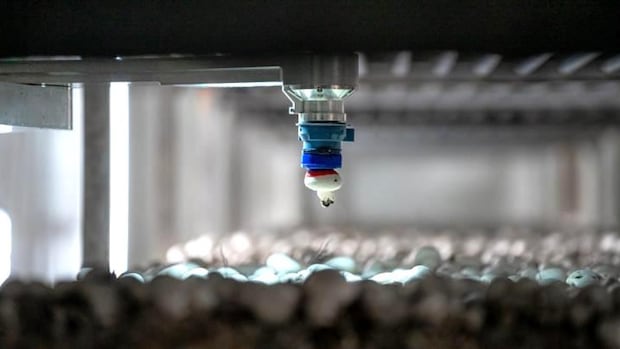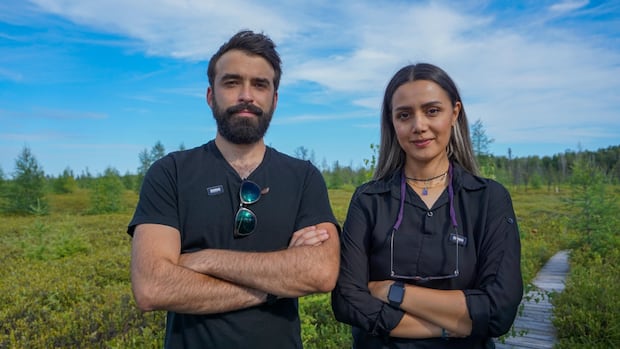As It Happens6:25When flamingos fish for food, they create underwater vortexes
During the pandemic, Saad Bhamla watched the flamingos at the zoo perform strange head movements as they ate, and found himself wondering: “What the heck is going on?”
The birds would submerge their heads in the water, with their beaks by their feet, while stomping their webbed feet, walking sideways and moving their mandibles, splashing water everywhere.
Bhamla and his colleagues decided to study the movements. It turns out, he says, the flamingos use their necks and beaks to create a vortex in the water to trap and slurp up their prey — an evolutionary practice apparently distinct to them.
“We couldn’t believe our eyes,” Bhamla, an associate professor of bimolecular engineering at the Georgia Institute of Technology in Atlanta, told As It Happens host Nil Köksal.
“When they raise their heads underwater, they create a tornado, which traps these tiny shrimps and tiny invertebrates living in the water that they want to feed on, and makes their job easier to sift them through the mud and muddy things that they feed in.”
The findings published in the journal Proceedings of the National Academy of Sciences show that these bright pink, spindly-legged birds stand out not just for their whimsical aesthetic; but also for quirky foraging habits and unique evolution.
How do flamingos eat?
As part of their research, the team observed 3D-printed models of the flamingos’ feet and beaks, and studied the skull of a deceased flamingo.
But the real stars of the study, Bhamla says, were Marty and Mattie, a dynamic duo of Chilean flamingos (Phoenicopterus chilensis) from the Nashville Zoo.
Thanks to their willingness to be fed in controlled conditions, the research team could observe these flamingos as they ate with their heads upside down and submerged in the tank.
Footage from a high-speed camera and other devices captured the velocity of these motions.
WATCH | Compiled simulations of flamingos’ foraging behaviours:
https://www.youtube.com/watch?v=https://www.youtube.com/watch
The team confirmed that their head’s anatomy — particularly their L-shaped beaks — help in creating this whirlpool effect as the birds quickly pull their heads out of the water.
“They’re moving their heads in tens of milliseconds,” Bhamla said. “And they’re doing this constantly, over and over again.”
The team also observed two other feeding techniques: chattering and stomping.
Chattering is when the birds clap their upper mandibles, or jaw bones, underwater. Mattie and Marty also chattered their beaks when they stood still, or as they stomped their feet to stir up the sediment below.
Stomping with their asymmetric webbed toes helps flamingos generate complementary vortexes to catch small prey and then easily swallow them with their beaks positioned near their feet.
The Bhamla Lab website lists a detailed breakdown of each of these techniques, including video clips and a comic book illustration.
‘They’re not doing a funny dance’
Jerry Lorenz, former research director of the bird conservation organization Audubon Florida who was not involved with this project, said the team “did an excellent job looking at the various flow patterns and movements” of both bill and tongue.
“We’ve known that flamingos had a very interesting way of foraging and that their mouth parts were just kind of a bizarre thing,” he said. “But the way they put it together to make sense of the evolution that created this … was just really astounding. I was actually delighted by the whole thing.”
From a conservation perspective, Lorenz says these findings are significant to understanding how flamingos interact with their environment to know how to best preserve it.
“Evolution doesn’t do accidents. If they’re doing a behaviour and you don’t understand why, there is an evolutionary reason for them to be doing that,” he said.
“They’re not doing a funny dance. This is how they get their food.”







